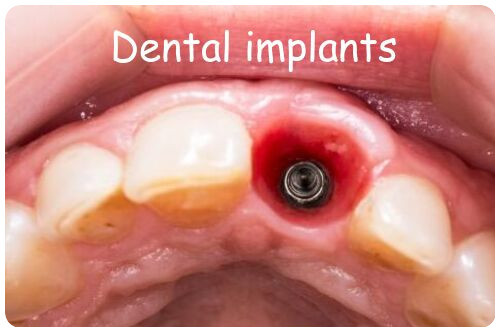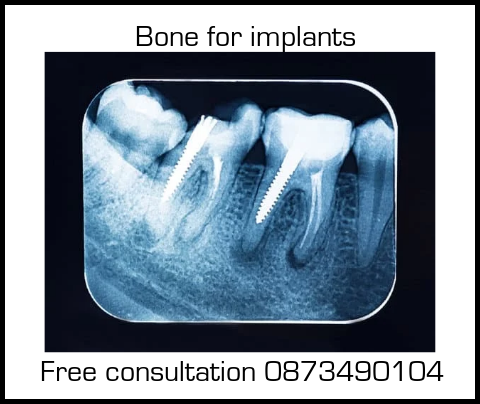
Implants bone graft
Are you looking for information on implants bone graft?
Perhaps you have some teeth that are missing or crooked and believe that you need dental implants but have been told that you don’t have enough bone to support an implant and the only answer is for a surgeon to treat the bone in order to enlarge it.
Dental implants are one of the most effective ways to replace missing teeth. They are titanium screws that are surgically placed into the jawbone to replace the root of a missing tooth.
Over time, the implants fuse with the jawbone, creating a sturdy foundation for a replacement tooth or bridge.
However, not every patient is immediately eligible for dental implant surgery. This is particularly true if the patient does not have enough bone mass in the jaw to support the implant. In this case, a dental implant bone grafting is necessary.
In this article, we will answer some common questions about dental implant bone grafts to help you understand the procedure, its benefits, and the recovery process.
To learn more about the cost of dental implants that need a bone graft go to this page.
What is bone grafting?
A dental implant bone grafting is a necessary procedure that is carried out by a dental surgeon to replace missing or insufficient jawbone.
During the procedure, bone material is taken from another part of the body, such as the hip or the shinbone, or from a donor source. This bone material is then transplanted to the jawbone to create a stable base for the dental implant.
Why is a dental implant bone graft necessary?
A dental implant that needs a bone graft is necessary when a patient’s jawbone is too thin or soft to support the dental implant. When a tooth is lost, the surrounding bone that once supported the tooth also begins to deteriorate.
This condition is called bone resorption. If too much bone is lost, the jawbone may not be strong enough to support the implant.
A dental implant with bone grafting is also recommended when the tooth has been missing for a long time, since the bone may have already deteriorated.
What are the benefits of bone grafting
Dental implant bone grafting offers several benefits, including:
1. Improved outcomes: A strong, stable jawbone will better support the dental implant, resulting in a more successful outcome.
2. More natural feel: An implant that is properly supported by healthy bone will feel more natural when chewing and speaking.
3. Aesthetically pleasing: With a proper bone graft, the implant will have a natural appearance and will be more aesthetically pleasing.
4. Improved oral health: A dental implant that needs bone grafting will help to reduce bone loss. This reduces the risk of oral health problems such as gum disease and tooth decay.
What is the procedure?
The dental implant bone graft procedure typically takes several months to complete. The procedure may take longer if the patient requires extensive dental work, such as multiple implants or extractions.
First, the dentist will assess the patient’s oral and overall health to determine if a bone graft is necessary. The dentist will conduct a thorough examination, including X-rays or CT scans, to determine the amount of bone needed to support the implant.
The bone graft material is then prepared for transplantation. The bone material is grafted onto the patient’s jawbone and secured with screws or pins to keep it in place. The gums are then stitched up, and the patient is given time to heal.
The transplanted bone will usually take several months to fuse with the existing bone in the jaw.
During this time, the patient will need to maintain a strict oral hygiene routine to avoid infection and promote healing.
Once the bone has healed and fused with the jawbone, the patient is ready for the implant surgery.
The implant surgery usually involves the insertion of a titanium screw into the jawbone, which will act as the root for the new tooth.
What is the recovery process?
The recovery process from dental implant bone grafting can take several months. After the bone graft surgery, the patient may experience some discomfort, swelling, and bleeding.
The dentist will provide pain medications and antibiotics to help manage the discomfort and reduce the risk of infection.
Patients may also be advised to eat soft foods and avoid hard or crunchy foods that could damage the bone graft or implant.
Patients should also avoid smoking and alcohol, which can impede the healing process.
The dentist may schedule regular follow-up appointments to monitor the healing process and ensure the implant with bone grafting are properly integrated.
Conclusion
A dental implant bone graft procedure is a common and effective treatment for patients who have lost bone mass and require dental implants.
With proper care and maintenance, a bone graft can provide a stable base for the implant, resulting in a more natural feel, improved oral health, and a long-lasting solution to missing teeth.
If you are experiencing tooth loss or need more information on this treatment, speak to your dentist or oral surgeon to determine if a dental implant bone graft is right for you.
References
https://pubmed.ncbi.nlm.nih.gov/34369720/



